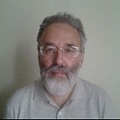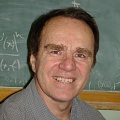As of 30.01.2020
Name of the project: Geometric control theory and analysis on metric structures
Strategy for Scientific and Technological Development Priority Level: а
Research directions:
- Problems of metric analysis, geometric control theory and differential geometry on Riemann structures and nonholonomic structures and aspects of their applications to optimal control theory
- Optimization over infinite time intervals and long-term behavior of dissipative systems, research of anisotropic diffusion controlled by hypoelliptic equations.
- Usage of methods of geometric control theory to solving applied problems: control of configuration of moving bodies, image recovery and quantum systems control.
Project objective: Designing new powerful geometrical and analytical means for solving complex problems in geometric control theory and analysis on metric structures, as well as applications of achieved results to problems in adjacent domains of pure mathematics and applied fields of studies.
|
Hosting organization
|
Field of studies
|
City
|
Invited researcher
|
Time span of the project
|
|---|---|---|---|---|
|
Laboratory «Probability techniques in analysis» (10)
Saint Petersburg State University - (SPbU) |
Maths |
St. Petersburg |
Hedenmalm Haakan Per
Sweden |
2024-2028 |
|
Laboratory «Nonlinear and nonlocal equations and their applications»
Peoples' Friendship University of Russia - (RUDN University) |
Maths |
Moscow |
Kuksin Sergei Borisovich
Russia, France |
2022-2024 |
|
Probabilistic Methods in Analysis
Saint Petersburg State University - (SPbU) |
Maths |
St. Petersburg |
Hedenmalm Haakan Per
Sweden |
2021-2023 |





